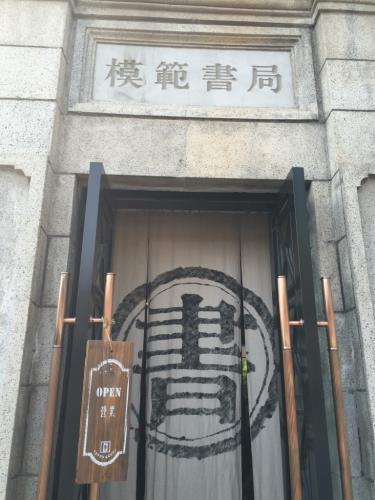Yap loves design, travel and everything beautiful in life. He writes for various media about travel and design and has published works, including Wander Bhutan and Myanmar Odyssey. Formerly publisher of Lonely Planet (China Office), Yap is now Chief Content Officer of Youpu Apps, a Beijing based travel app company.

I like strolling along Beijing’s old hutongs, or back alleys. I still find it fun to amble down Nanluoguxiang even it has already been very commercialised. Off the hustle and bustle of the boulevard, the hutong is quiet and is where you can still catch a glimpse of traditional community life in Beijing. If we cannot change the fact that China’s cityscapes are changing inevitably, we have to accept it. If the changes are for the betterment of the communities, they are acceptable even though the places look no longer the same.
Adjacent to Yonghe Temple, Guozijian Street is one of the most beautiful hutongs in Beijing. The Confucius Temple is located on this ash tree-lined alley. During summer times the street is covered with dense foliage overhead. The hutong is not long, and its width is just about right, making it one of the very few streets in Beijing that is of the right size. Even the alfresco areas of the cafés are full of people, you do not feel crowded there.
Guozijian Street is brimming with shops that sell low-quality, uninspiring knick-knacks. Shengtangxuan perhaps is an exception. This historical brand sells handmade Beijing-style toys. To the west end of the street there are cafés and souvenir shops, and it’s worth spending time there. By comparison with the very touristy Nanluoguxiang, Guozijian Street is quieter. However, amid the quietness you can see that something is happening and feel that it starts attracting people.
Lost&Found is located on this street. The owner is a Chinese lady and an American man. They both love everything about design, especially the furniture and household items that could be found in China in the 1960s. Therefore they started running this shop and it’s named Lost&Found because they want to help their customers to awaken the memories they have almost forgotten. The shop is small but it boasts various types of items. The furniture collection is particularly outstanding. Chairs that can be found in every household are used as a product prototype. Imported oakwood and calf leather are used and local carpenters are hired to craft the new chairs.
The American owner designs the furniture, while his partner is in charge of fashion. Most of the clothes are simplistic and sensible in style. I believe that such design, with a MUJI vibe and a discreetly oriental touch, can only be created by an avid female traveller like her. If you like Chinese-style furniture and household items, not to be missed is Fnji Furniture located on the same street. All products, with a low-key Chinese-style design, are designed by independent Chinese designers and exude a quaint old Ming-dynasty-style of elegance.
Apart from Guozijian Street, Yangmeizhuxie Street near Dashilar is another hutong frequented by young and hip Beijingers. With a strong old Beijing vibe, Dashilar boasts a maze of historical hutongs. Yangmeizhuxie Street, literally poplar, plum and bamboo sloping street in Chinese, easily makes one think that whether the street is full of plants that are considered auspicious in the Chinese culture. In fact, legend has it that during the early Qing dynasty, a matchmaker (“mei” in Chinese) whose surname is Yang was living in the area and hence it’s called Yangmeixie Street. The hutong has kept its quaint old name and I think that when comparing to those pretentious names of the major roads, this one actually shows more creativity of common people.
Yangmeizhuxie Street inevitably has undergone transformation and now it’s a pedestrianised street. Fortunately most of the residents are able to keep their ancestral homes. Some of the shops along the street are given new life as cafés, bookshops and accessory shops. Local residents and hipsters mingle with each other and they represent different facets of Beijing. A potpourri of beauty permeates every corner there.
During the Republican era, Yangmeizhuxie Street was a cultural landmark in Beijing and boasted a number of interesting bookshops like the World Bookstore, Zhongzheng Bookstore and Kaiming Bookstore. They were all prominent publishers back then. Now, cosy bookshops are sprouting up in the street, as if they are to carry on the tradition of the street. Mofan Bookstore is one of them. The interior of the shop is full of designs in the Republican era. It’s definitely worth spending some time there. Apart from selling old prints, the shop also sells a lot of culturally-inspired items like the retro thread-bound books. Adjacent to the bookstore is a retro style café called Soloist. Hand drip coffee is sold there. My friend and I sat at the balcony on the second floor, enjoying our coffee and the views of an ocean of roof tiles in front of us.
Yangmeizhuxie Street and Guozijian Street make me think of the yesteryear’s Nanluoguxiang. I sincerely hope that amid the rapidly changing world, these hutongs can keep their character while being commercialised. I also hope that the shops there can continue to do their own businesses without too much intervention from the outside, and I hope that people there can sustainably continue their own ways of life.